
History of Leyland Motors, Leyland, Lancashire
Leyland Motors, one of the most famous names in British vehicle manufacture. Maker of buses and trucks for the world. Expanding to include Britain's most famous car manufacturers as the British Leyland Motor Corporation before its collapse. The truck division lives on as part of PACCAR Leyland Trucks in Leyland.


In 2016 the Leyland Society are celebrating 120 years of Leyland Motors and its direct predecessor. There will be a ticket only event at the Leyland Paccar plant at Farington in July.
Part 1 1895 to 1960
Leyland is situated 5 miles south of Preston and was home to Leyland Motors once the 5th largest producer of trucks and buses in the world. It is now owned by the US company PACCAR and assembles 14,000 trucks a year at Leyland near Preston, although I think it's actually now in an adjoining area called Farrington.
A whole series of buses familiar to people all over the UK came from this factory. The single deck Leyland Lion, Tiger, Panther, Leopard. The double deck Titan PD series. Not to forget the Atlantean a Leyland design that radically changed the shape of buses all over the world. There were trucks as well the Beaver, Comet, Octopus and Hippo. Got to be careful though as specialist bus body builders used Leyland chassis so buses with the Leyland badge were often only the chassis. The last Leyland bodied buses were made in 1955.
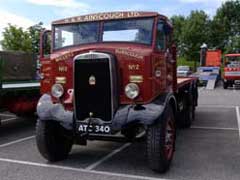
The company started in a back yard in Leyland, Lancashire, and grew through its fine products, business sense and gradual consolidation. At its peak the name Leyland covered almost all the remaining British owned vehicle manufacturing companies from Alvis to Wolseley alphabetically (can t think of any beginning with X, Y or Z) making cars, buses, lorries, not to forget Fire Engines.
Below is some history as gathered from the sources listed below. As the main source is a bus oriented area there is more about buses than trucks but over time this should/h3 be redressed.
Page 1 is the story up to 1960, see below.
Page 2 is the story from 1960 click here.
J. Sumner Ltd - 1890s
James Sumner
The founder of what eventually became Leyland Motors in Leyland, Lancashire. James was born in 1860 in Leyland and enjoyed building steam powered engines for vehicles and bicycles and experimented with vehicle designs that weren't very successful. His father ran a blacksmith in Leyland which James inherited in 1892. He wasn't keen on the blacksmith business and he created a steam lawnmower which secured a first prize and silver medal at the Royal Lancashire Agricultural Show. James Sumner died in 1924.
Henry Spurrier
Became interested when his brother, George, obtained a share in the early company. The Spurriers came from the Manchester area.
J.Sumner Ltd was the initial name in 1895 and was formed when a Preston company, Coulthard & Co, purchased a half share. A 3 wheel car was built with a lawn-mower engine as the main business was then lawn-mowers.
George Spurrier later received Coulthard's share.
Henry Spurrier, his brother, took an immediate interest in the company and joined with James Sumner. Henry Spurrier had spent eight years with an American railway company and had gained valuable experience in the use of steam power.
Lancashire Steam Motor Company - 1896
A new company, the Lancashire Steam Motor Company was formed with rented premises in Herbert Street, sufficient to accommodate the workforce of around twenty. By the end of 1896 the first steam vehicle was produced, and by 1899 the first passenger carrying vehicles were offered for sale. The first Leyland bus is believed to have been delivered to the Dundee Motor Omnibus Co in 1900.
In 1902, with sales of buses rising and the workforce numbering in excess of 150, the Company moved to larger premises in Hough Lane.
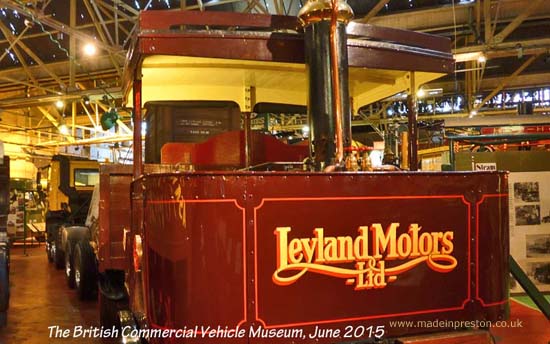
The Company exhibited a petrol-engined double-decker at the 1905 Commercial Motor Show. However a Crossley engine was fitted while their own design was completed. This could have influenced the London and Suburban Omnibus Company to order the first petrol-engined double-deck Leyland bus for the Capital. The Company still traded under the title Lancashire Steam Motor Co. but this chassis bore the name 'Leyland', and by the end of the year six such vehicles were in service. These proved to be so reliable compared to other makes that over 100 Leyland vehicles were purchased before 1914.
By 1906 the Company had built its own engine and began to market it. It has been suggested that the close collaboration with Crossley Motors resulted in the improvements necessary.
The first recorded demonstration bus was also built in this year. Bodied by Milnes-Voss it seated 40 and had a forward spiralling staircase that extended over the engine.
Leyland Motors Limited - 1907
Leyland Motors Limited was the name used by the company from 1907. Also in that year the company bought Coulthard's of Preston.
X Type: In 1907 the first successful petrol-engined vehicle was built the Leyland 'X' type in1907 .
U type: Also introduced in 1907, Todmorden Corporation buying the first two examples.
In 1912 the War Office held trials to determine which vehicles would qualify for a war subsidy. The owners of vehicles that qualified would be eligible to receive a premium of £50 on the purchase price of each vehicle and an annual subsidy for three years of £20. The vehicle was to be maintained in good order and would be available for purchase at 72 hours notice in the event of war at current market value plus 25%. Vehicles were arranged in two classes, 30cwt and 3 tons. Leyland vehicles were the only ones capable of gaining certificates in both classes. This resulted in an order from the War Office for 88 chassis and proved a great boost for sales and reputation.
The rise of the petrol-engined vehicle meant that demand for steam vehicles was now slowly falling and manufacture of these types of vehicle was transferred to a small factory at nearby Chorley.
In 1913 a new site was built at Farington, just north of Leyland, for the increasing volume of work. The workforce now numbered over 1500, and over 2000 vehicles had been produced in the decade up to the outbreak of war.
During the first two years of the War all civilian production ceased. In 1915 the entire production of 6000 lorries was allocated to the RAF.
Up to 1925 Leyland Motors introduced around 40 different models.
The M1 and O1 appeared in 1919, both using the Leyland 36-40hp engine and could accommodate 28 and 33 passengers respectively.
Also in 1919 the G range, G1 to G8, was introduced, based on the wartime RAF chassis, using the same engine.
Legislation was introduced to strictly limit the size of vehicles and this drove further innovation. To maximise the space within these limits Leyland moved the driver alongside the engine instead of over it. This was the 'side-type' introduced in 1922. These became the SG range.
In 1920 Leyland produced the luxury car the 'Leyland Eight (click here to read more)'. This was launched at the London Car Show and was the most expensive car on the market at that time. Only a few models were made some of which are stored. At this time the Chief Engineer was JG Parry-Thomas who became World Land Speed Record Holder and his assistant was Reid Railton who helped set up the Arab Motor Company and worked on Bluebird for Sir Malcolm Campbell and cars and speedboats for John Cobb.
London General were now the largest London bus operator and had historic ties with the Associated Equipment Company(AEC) and purchased almost all its vehicles from them. To break the virtual monopoly of AEC, Leyland introduced the LB ( for London Bus) range, similar to the G7. The LB" was the first model and sold well to independent operators in London.
In 1923 the GH range replaced the 'G' range, although some 'G' models were still produced until 1925.
Leviathon, Leveret, Lion, Lioness, Leopard - 1925
Up until this time chassis were commonly designed for both lorry and bus bodywork. The first model of the Leviathan range (the LG1) was a forward control double-decker with 4-cylinder side-valve engine. The LG1 had solid tyres as pneumatic tyres would not support the weight of a fully laden double-deck bus. A few months later the LSP1 variant with overhead valve engine came onto the market.
The single-deck variants in the L range were the Leveret (LA2; 20-seat), Lion (LSC1; 32-seat), the Lioness (LC1; 36-seat) and the Leopard (LSG2; 38-seat), which, when they appeared in 1926, were supplied with pneumatic tyres. With the general introduction of the pneumatic tyre the chassis designation included a prefix 'P' (e.g. PLC1).
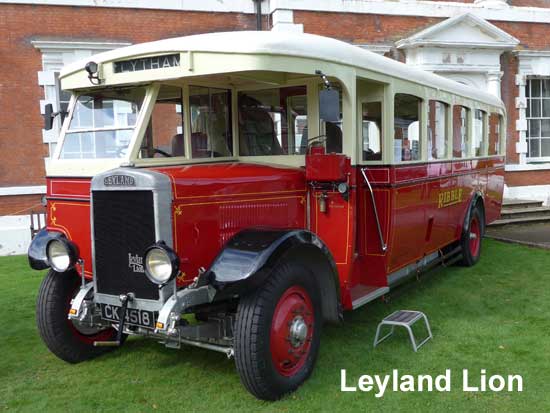
In late 1926, probably the best known of the range, the PLSC3 Lion', was introduced. 16 LSC1 Lion chassis were supplied to English Electric in 1928, without engines or gearboxes, to be converted to trolleybuses for Bradford Corporation. In time Leyland came to offer its own purpose built trolleybuses.
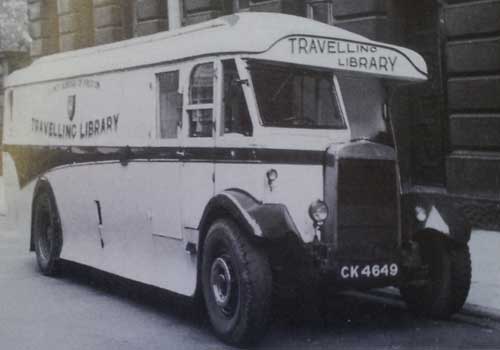
Photo: 1932 Leyland Lion LT5, CK4649. Preston Corporation Travelling Library from 1948 to 1966. What a fabulous bus, went in that many times at Eldon Street.
Titan, Tiger, Titanic - 1927
In 1927 the Titan double-deck and Tiger single-deck chassis were introduced. The Titan TD1 was only 13ft high and with aluminium panelling weighed only 5.5tons, low enough for pneumatic tyres. The 'Tiger' single-deck had much in common with the 'Titan' and was designated TS1 and proved extremely popular.
Titanic: With the overall length of a two-axle double-decker limited to 25ft, Leyland produced a three-axle version for bodywork up to 30ft in length, named the Titanic, seating around 72 passengers. The Titanic (TT1 to TT6) were never a great success.
The TD2 Titan was introduced at the end of 1931, replacing the TD1. It had larger tyres, better brakes and more robust construction.
Leyland Motors Clock
Leyland Motors installed clocks by the roadside in the 1930's. This one was on the A6 at Shap and is now in the Brewery Art Centre, Kendal. Another is at the National Motor Museum at Beaulieu.
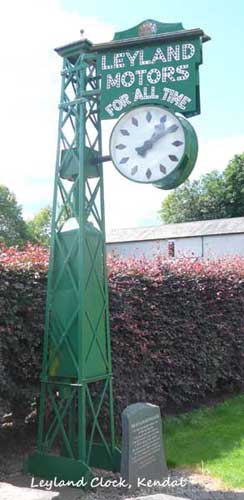
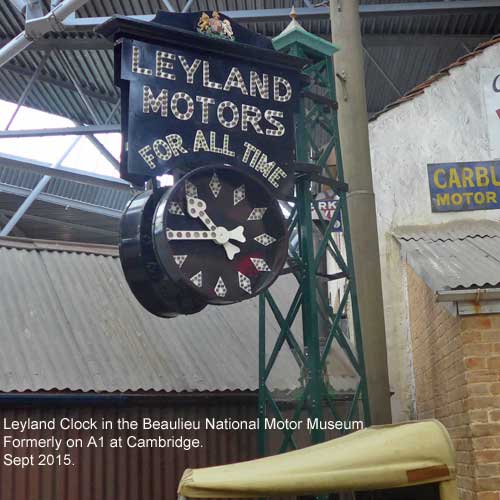
K, Cub - 1932
The K type was also introduced in the same year. Better known as the Cub it was intended for goods and passenger chassis and was normal control, although in 1932 two forward control models (prefixed with 'S' for side-type), the SKP2 and SKP3 were introduced.
TB Trolleybus - 1932
The TB range of trolleybuses was introduced in 1932, with two- and three-axle versions (TB and TTB respectively) and was one of the first range of custom trolleybuses offered, as opposed to the more common conversions from standard petrol/diesel engined buses.
Diesel Engine - 1933
In 1933 the first Leyland diesel engine for passenger vehicles was exhibited at the Commercial Motor Show. It was intended initially for the Cub range, but by the end of the year the diesel engine was available for all models in the Leyland range.
All Metal Bodywork - 1934
By the end of 1934 all-metal bodywork was offered as an option to customers, and proved to be more robust and longer lasting than traditional timber-framed bodywork. By the end of the decade operators were looking for bodywork that could be used for stage carriage work during the week and for excursion or express duties at the weekend and this led to the development of the 'dual-purpose' body, intermediate between standard saloon and luxury coach.
Cheetah - 1935
A new lightweight chassis, the 'Cheetah' was introduced in 1935 along with the Titan TD4 and an improved version of the Tiger, TS7. In 1937, 100 TD4's were delivered to the London Passenger Transport Board where they formed the STD class, Leyland's first large-scale London order since the early part of the century. Their reputation for silence and operating smoothness undoubtedly led to the co-operation of both parties in a prototype 'Tiger', designated the 'FEC'. After undergoing proving trials a fleet of 87 (classed TF by LPTB) entered service in 1939. Sadly, however, the onset of the Second World War brought an end to the experiment.
Gnu - 1937
The infamous 'Gnu' also made its appearance at the 1937 Commercial Motor Show, but its twin steering did not find favour with operators and only 8 in total were built.
Rear Engine Cub - 1938
Another joint development with London Transport was the rear-engined Cub, the prototype of which was built in 1938. With B20F bodywork built by London Transport themselves it was designated the CR class and 59 production models were ordered. Sadly, because of the impending War, only 48 were delivered and the subsequent hostilities brought the experiment to an end. It was to be over 20 years later before Leyland introduced another rear-engined single-decker.
Second World War
In 1941 plans were announced for the Titan TD8, but had to be shelved when the Government ordered Leyland Motors to stop production of all passenger chassis and concentrate on military vehicles. The Ministry of Supply, however, allowed Leyland to build as many buses as possible from components which had already been assembled, resulting in the construction of 196 TD7's and 22 TS11's, such vehicles being known as 'unfrozen'.
Cromwell / Centurion Tank - 1943
During the war the factory at Leyland built tanks. A wide road approaching the factory was called Centurion Way.
Titan PD1, Tiger PS1 - 1945
Manufacture of buses after the Second World War did not recommence until late in 1945 and it was some six months later before full production was resumed, priority being given to double-deck chassis due to the pressing demand from operators for maximum capacity vehicles. Two completely new designs were introduced, the Titan PD1 and the Tiger PS1, which shared the same major components. The first completed PD1 entering service with Bury Corporation in March 1946 and the first PS1 entering service with near neighbour Ramsbottom UDC around the same time.
The shortage of buses in the immediate postwar period meant that many older vehicles were refurbished, in most cases prewar petrol engines were replaced with the Leyland 7.4-litre oil engine, which was offered as a conversion unit for prewar chassis. When re-bodied they were hardly distinguishable from new vehicles.
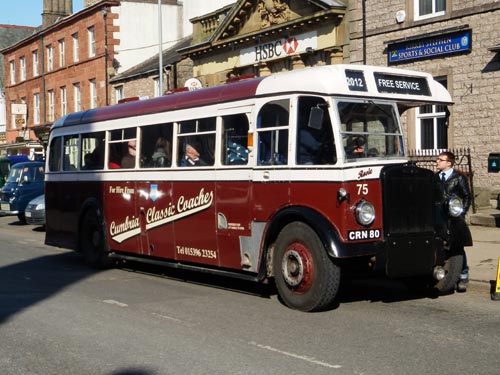
PD2 - 1947
In 1947 the Titan was offered with the 0.600 engine, which had been used in goods chassis since 1946. It had the advantage of a livelier performance and, because the engine was under-stressed, greater intervals between overhauls. The first model to feature the engine was the PD2/1, with vacuum brakes, 16ft 3in wheelbase and width of 7ft 6in. Birmingham was the largest customer with 200 ordered between 1948 and 1949. Later in 1947 the PD2/3 was offered as the 8ft wide version of the PD2/1.
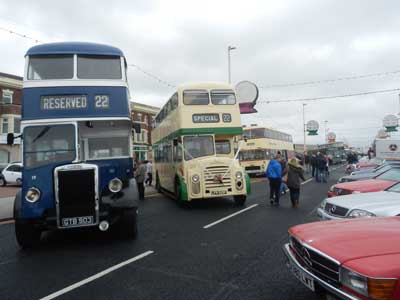
RTL (London) - 1948
In 1948 London Transport, aware that AEC alone would not be able to cope with the postwar demand for buses from the capital, placed an order for 2,135 Titans, of which 500 would be the 8ft wide version. The 7ft 6in versions were prefixed by the letters RTL, whilst the 8ft version became the RTW.
The 0.600 engine was also used on the postwar Tiger, the designation being PS2, for vehicles so fitted. The vast majority of Tigers, however, were built with the narrower 7ft 6in bodywork, not unsurprising when it is realised that route approval from the Traffic Commissioners was required for 8ft wide models. This put a great restraint on the flexibility of 8ft wide vehicles; especially coaches and thus many operators preferred the narrower version.
Comet - 1948
The Leyland Comet became available early in 1948 and provided a medium weight alternative to the heavier Tigers. It had a gr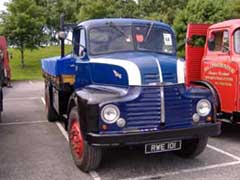 oss weight of 8.75 tons, a 17ft 6in wheelbase and was of a semi-forward control design. Most of the Comets for the domestic market were purchased by independent operators.
oss weight of 8.75 tons, a 17ft 6in wheelbase and was of a semi-forward control design. Most of the Comets for the domestic market were purchased by independent operators.
1950 Regulations
Changes to the British Construction and Use of Vehicles Regulations in 1950 permitted all Public Service Vehicles to be 8ft wide, irrespective of the route and at the same time the maximum length of double-deck vehicles was increased to 27ft. As a result Leyland made slight modifications to the Titan, including an increase in the wheelbase to 16ft 5in. At the same time the standard Leyland bodywork was improved with the introduction of the 'Farington' style. Shortly afterwards the Construction and Use Regulations were amended to allow 30ft single-deck vehicles on two-axle construction.
Underfloor Engine - 1949, Olympic - 1950
In 1949 Leyland turned their attentions back to the development of the underfloor engine, which had been interrupted by the War. The advantages of the underfloor engine were increased seating capacity in a given chassis length, much improved entry and exit, better weight distribution and easier accessibility to mechanical parts, with the consequent saving in maintenance costs.
Leyland chose to combine with Metro-Cammell-Weymann to construct the new vehicle, which they named the Olympic, though they were more than capable of constructing the bodywork themselves.
Integral (or chassisless) construction replaces the traditional chassis and bodywork with a strengthened body. It was not popular among British operators. Nevertheless, the HR40 Olympic was produced and Red & White of Chepstow took delivery of the first domestic Olympics in 1950.
Royal Tiger - 1950
In addition to the Olympic, Leyland introduced a separate underfloor-engined chassis, suitable for the range of bodywork preferred by many of their customers. It was named the 'Royal Tiger' and designated PSU1, with the 'U' signifying underfloor engine. There were eight models offered for the domestic market, designated PSU1/9 to PSU1/16, all with 15ft 7in wheelbase and either 7ft 6in (PSU1/9-12) or 8ft (PSU1/13-16) overall width. The designations PSU1/1 to PSU1/8 were never built, since they were intended to be 27ft 6in long, but the amendments to the Construction and Use Regulations made them obsolete before they could be built. The first production Royal Tiger buses were three for Ramsbottom UDC in 1950, who had also taken delivery of the first PS1 Tigers after the War and had also been one of the first to receive the Titan PD2/1 in 1948. The Royal Tiger became an instant success, especially abroad, were they were ordered in great numbers.
Albion Motors Ltd - 1951
In 1951 Leyland Motors acquired the Glasgow-based bus manufacturer Albion Motors Ltd. There followed some heavy pruning of the Albion bus range after the purchase and by 1953 only the Albion Victor was still being sold. Gradually, however, as the design teams of the two companies' co-operated, components from each company began to appear in the vehicles of the other.
Tiger Cub - 1952
A new chassis, the Tiger Cub, designated 'PSUC' - the 'C' standing for 'Cub', was exhibited at the 1952 Commercial Motor Show. Lighter by some two tons than the Royal Tiger, the Cub had a full 30ft long chassis with 16ft 2in wheelbase and was initially only offered with 8ft overall width. It proved to be highly popular among coach operators.
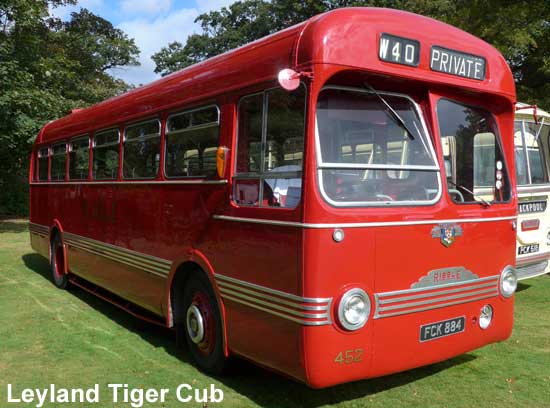
By the end of 1954, the Royal Tiger had been developed into a new range, primarily for export, called the Royal Tiger Worldmaster, although some models went to the home market. Halifax and Glasgow were the only domestic customers for the RT3/1, whilst the RT3/2 sold in very small numbers to a few of the leading independents. Production of the Royal Tiger ceased in 1955.
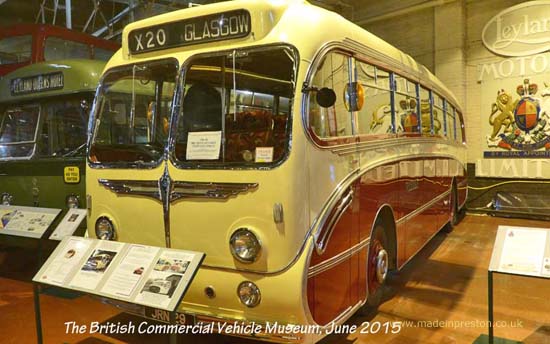
PDR1 Rear Engine - 1952
Another concept pioneered by Leyland in the 1950's was the rear-engined double-decker. With bus operators' facing a downturn in the numbers of passengers carried, ways of economising were sought. Although the first experimental rear-engined bus was of conventional rear entrance design, later developments made it possible to move the entrance to the front of the vehicle, initially so that the driver could supervise loading whilst the conductor colleted the fares, but later it was to prove conducive to one-man-operation. The first prototype was No. 530001 and made its appearance in 1952, with a second (No. 542209) in 1954. Designated PDR1 ('R' for rear-engined), it was named the Lowloader.
In 1954 Leyland Motors ceased production of its own passenger vehicle bodywork, although it still continued to build commercial vehicle bodywork. The last Leyland coach body being built for Wilkinsons of Sedgefield, whilst Trent Motor Services took delivery of the last bus body on a PD2/12 Titan chassis.
Photo of prototype Atlantean at St Helens:
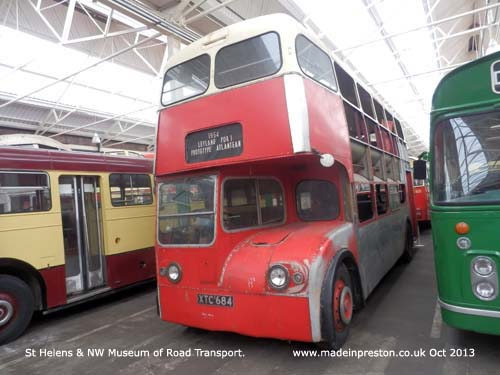
Scammell Lorries - 1955
In 1955 Leyland Motors took over Scammell Lorries who continued manufacture of specialist lorries until 1988 at Watford.
PD3
An amendment to the Construction and Use Regulations on 1st July 1956 saw the maximum length for double-deckers increased to 30ft and Leyland introduced a range of Titans to the new length. The six models were designated PD3/1-6 and were all 8ft wide with wheelbase of 18ft 6ins. Later models were 8ft 2 ½ inches.
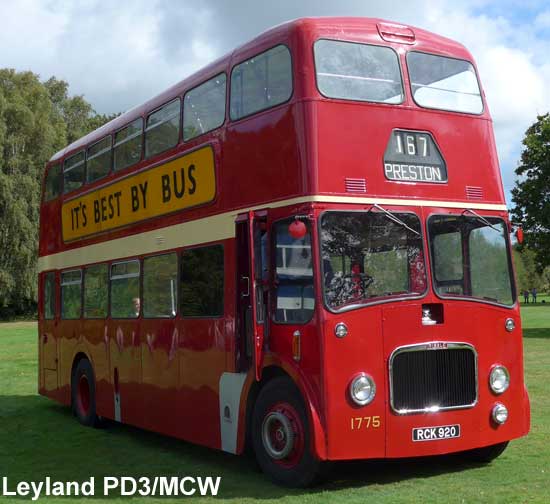
Atlantean - 1956
This gave bodybuilders the scope to increase the seating capacity of double-deckers up to 75-seats de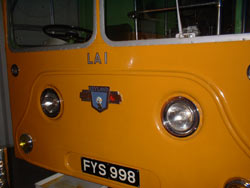 pending on the layout chosen. The new permitted dimensions also enabled Leyland Motors to review the design of the rear-engined double-decker. The first prototype 'Atlantean' was exhibited at the 1956 Commercial Motor Show, although several drawbacks prevented the bus being placed on the market. Among the chief problems was the amount of noise in the lower saloon, largely accounted for by the fact that the engine was inside the body, with the compartment being used for bench seating for up to 5 passengers. By 1958, Leyland had overcome the initial difficulties and announced the first production 'Atlantean' the PDR1/1 with 16ft 3in wheelbase, with Glasgow Corporation taking the honour of putting the first Atlantean into service.
pending on the layout chosen. The new permitted dimensions also enabled Leyland Motors to review the design of the rear-engined double-decker. The first prototype 'Atlantean' was exhibited at the 1956 Commercial Motor Show, although several drawbacks prevented the bus being placed on the market. Among the chief problems was the amount of noise in the lower saloon, largely accounted for by the fact that the engine was inside the body, with the compartment being used for bench seating for up to 5 passengers. By 1958, Leyland had overcome the initial difficulties and announced the first production 'Atlantean' the PDR1/1 with 16ft 3in wheelbase, with Glasgow Corporation taking the honour of putting the first Atlantean into service.
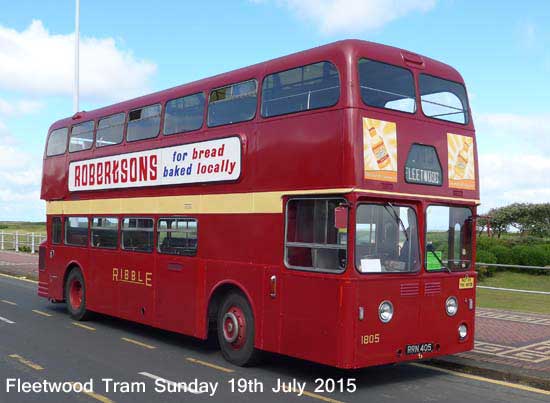
Leopard - 1959
Another new model was introduced at the 1959 Scottish Show. Designated the 'Leopard', it was a medium-weight chassis and was intended to fill the gap left by the Royal Tiger, although it was basically a Tiger Cub chassis with a larger engine. Two models were offered, the L1, which was the bus version and the L2, which was the coach version. Both were 8ft wide and 30ft long with a wheelbase of 16ft 2in.
By 1961 another amendment to the Construction and Use Regulations now permitted the maximum length of single- and double-deck buses and coaches to be 36ft and the maximum width to be 8ft 2½ ins. In the summer of 1961 Leyland Motors announced a new range of Leopard model/h3s with 36ft long chassis for the home market, which they designated PSU3/1R to PSU3/4R. All four models had a wheelbase of 18ft 6in with overall width of 8ft.
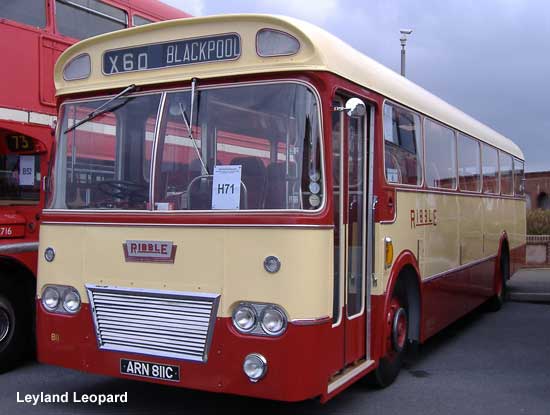
Continued on Page 2 1960 to now > Click here.
References;
The Leyland Bus (Doug Jack, PRC 1984) and Beyond Reality, Leyland Bus - The Twilight Years (Doug Jack, Venture 1994), with some additional notes from Leyland Buses in Camera (Gavin Booth, Ian Allan 1981).
Acknowledgement primarily to the Haslingdon Borough Corporation Transport Society site for this information which is summarised and built upon. Their page seems to have been removed.
The booklet; 'Leyland Motors Ltd Official History 1896 -1986 from the British Commercial Vehicle Museum for all of £4. Also from the same place the booklet; 'Leyland Atlantean', £1.50.